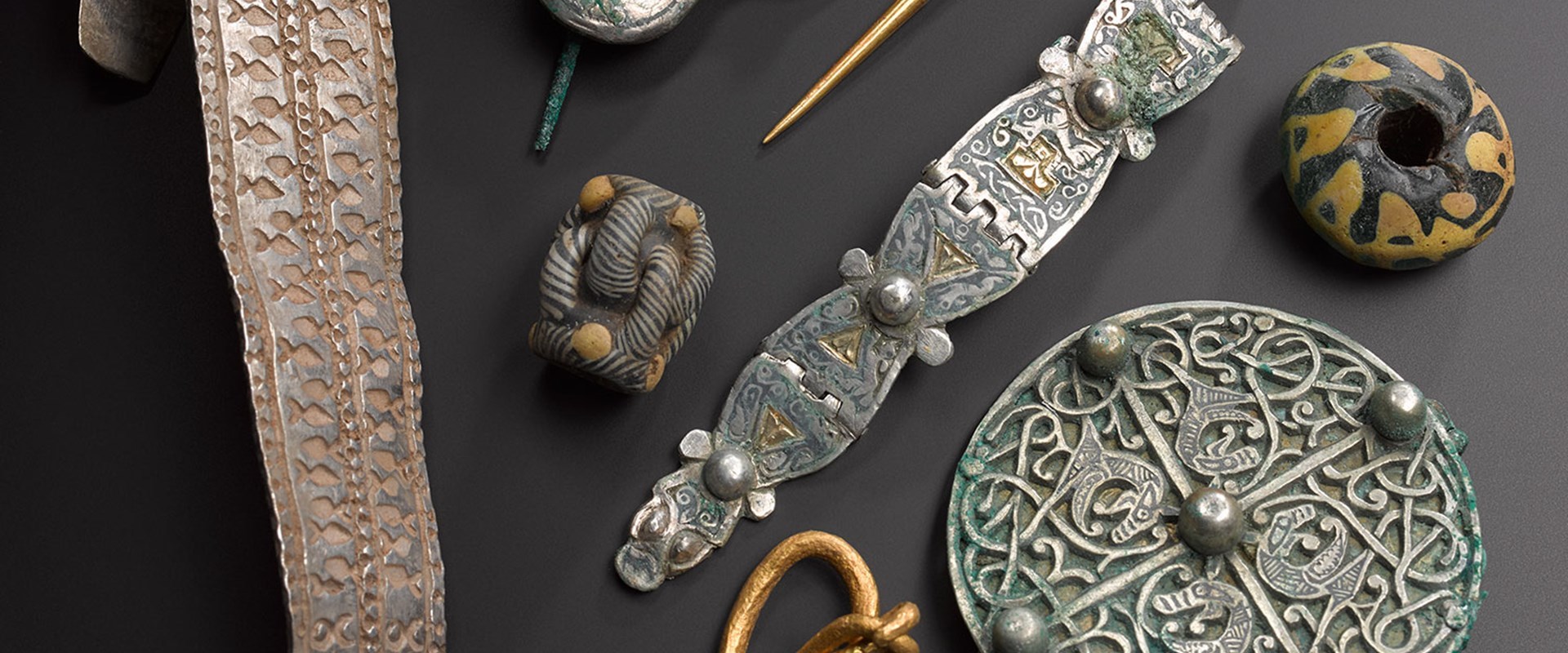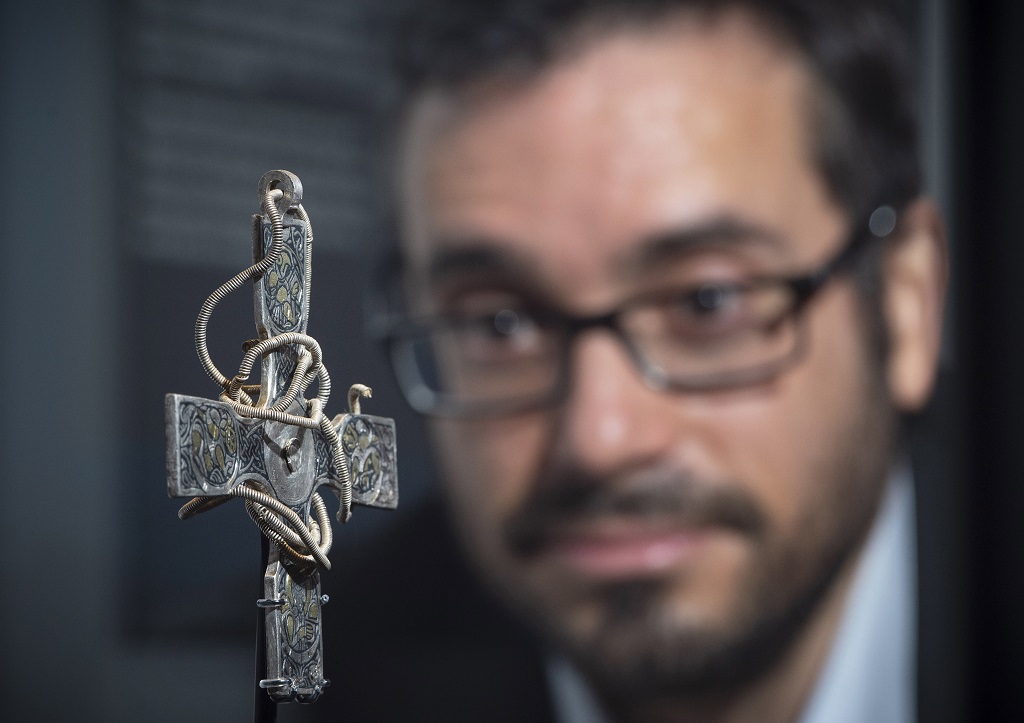One of the most important UK archaeological finds of the century, The Galloway Hoard, has gone on display from October at Kirkcudbright Galleries.
The exhibition, Galloway Hoard: Viking-age Treasure, offers the first chance to see details hidden for over a thousand years, revealed by expert conservation, painstaking cleaning and cutting-edge research. The exhibition opened on October 9, and will run until July 10 next year.
The Galloway Hoard is the richest collection of rare and unique Viking-age objects ever found in Britain or Ireland. Buried around AD900, the Hoard brings together a stunning variety of objects and materials in one discovery.
Dr Chris Breward, director of National Museums Scotland said: ‘The Galloway Hoard rightly drew international attention both on its discovery and its acquisition by National Museums Scotland following a successful major fundraising campaign, and we are excited to finally be able to bring the Galloway Hoard to Kirkcudbright in October.
‘The exhibition is a fabulous opportunity to see the Hoard far more clearly than before and to gain an insight into the amazingly detailed work that we have done and are continuing to do in order that we can understand it more fully.’
Councillor Andy Ferguson, chair of Dumfries and Galloway Communities Committee said: ‘Dumfries and Galloway Council is excited and honoured to host this unique exhibition. I was lucky enough to see the hoard shortly after discovery and seeing it so many years later I’d like to put on record my admiration and gratitude to National Museums Scotland for all their hard work in conserving and displaying this wonderful collection.’

The Galloway Hoard (Photo: National Museums Scotland)
The exhibition is supported by the Weston Loan Programme with Art Fund and Museums and Galleries Scotland.
Sophia Weston, Trustee of the Garfield Weston Foundation, said: ‘Bringing world class objects to local museums so that they can be enjoyed by as many people as possible is what the Weston Loan Programme is all about. We are thrilled that it is supporting the display of these truly magnificent treasures in Kirkcudbright, so near the site of their discovery.’
Created by the Garfield Weston Foundation and Art Fund, the Weston Loan Programme is the first ever UK-wide funding scheme to enable smaller and local authority museums to borrow works of art and artefacts from national collections.
The exhibition shows how the Hoard was buried in four distinct parcels. The top layer was a parcel of silver bullion and a rare Anglo-Saxon cross, separated from a lower layer of three parts: firstly another parcel of silver bullion wrapped in leather and twice as big as the one above; secondly a cluster of four elaborately decorated silver ‘ribbon’ arm-rings bound together and concealing in their midst a small wooden box containing three items of gold; and thirdly a lidded, silver gilt vessel wrapped in layers of textile and packed full of carefully wrapped objects that appear to be have been curated like relics or heirlooms. They include beads, pendants, brooches, bracelets, and other curios, often strung or wrapped with silk.
Discovering and decoding the secrets of The Galloway Hoard is a multi-layered process. Conservation of the metal objects has revealed decorations, inscriptions and other details that were not previously visible. Research into many aspects of the Hoard continues and will take many years. Some items are too fragile to be displayed, particularly those with rare textile survivals. The exhibition will use AV and 3D reconstructions to enable visitors to understand these objects and the work that is being done with them.
This will include a 3D model showing remarkable new detail of the unique lidded vessel which contained the Galloway Hoard’s most precious treasures. New models taken from X-ray imaging done at the British Museum and produced with the help of the Glasgow School of Art and Steven Dey of Thinksee3D Ltd has enabled researchers to see beneath the textiles which cover it for a privileged glimpse of the decorated surface of the vessel. The modelling, alongside dating analysis of the textiles, has revealed surprising new details about its age and origin, suggesting that it was over 100 years old when it was buried, and that it was made in Central Asia, much further away than was initially thought.

Dr Adrian Maldonado Galloway, with a Pectoral Cross from the Hoard ,which is now on display at Kirkcudbright Galleries
Neil Hanna Photography
www.neilhannaphotography.co.uk
07702 246823
The Galloway Hoard was discovered in 2014. It was acquired by National Museums Scotland in 2017 with the support of the National Heritage Memorial Fund, Art Fund and the Scottish Government as well as a major public fundraising campaign. Since then, it has been undergoing extensive conservation and research at the National Museums Collection Centre in Edinburgh.
Research meanwhile continues into the Galloway Hoard. The Arts and Humanities Research Council (AHRC) has awarded support for a £1m, three-year research project, Unwrapping the Galloway Hoard, led by National Museums Scotland in partnership with the University of Glasgow which commenced in June.
The Galloway Hoard will eventually go on long-term display at the National Museum of Scotland in Edinburgh with a significant and representative portion of it also displayed long-term at Kirkcudbright Galleries.
The exhibition is accompanied by a book detailing the most up to date research findings and will be supported by a range of digital and learning activities and resources.
TAGS

